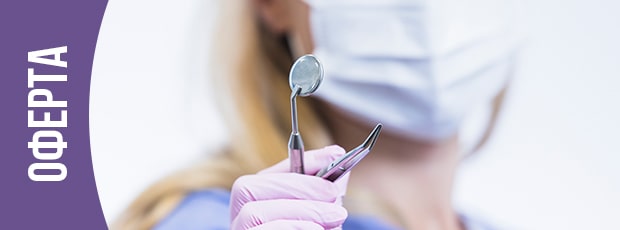No one would like a nickname like Dumbo or Mickey Mouse, especially kids. Teasing can damage self-esteem at a critical time in a child's development. Otoplasty is an easy and effective way to permanently reshape the ears so that they are more balanced with the rest of the facial features.
What is otoplasty?
Otoplasty-also known as cosmetic ear surgery-is a surgical procedure to change the shape, position, or size of the ears.
Why is otoplasty done?
Some studies have shown that having prominent ears can lead to low self-esteem, isolation and lack of confidence. For this reason, some people opt for otoplasty surgery. Some parents seek the option of surgery for their children before they start school to avoid embarrassment and insecurity about their appearance.
In general, the outer ear has a minor function for hearing. However, it contributes to a person's harmonious appearance.
You can go for otoplasty if you are bothered by how far your ears stick out of your head. You can also consider otoplasty if your ear or ears are deformed due to an injury or birth defect.
Otoplasty is most commonly performed to correct large or prominent ears. It can also correct ear asymmetry, misshapen ears, restore an outer ear missing at birth, and repair an ear damaged by traumatic injury or disease.
Otoplasty may involve surgery on one or both ears to correct certain areas such as the upper or lower ear, or the entire ear.
Apart from prominent ears, there are a number of other ear problems that can be solved with surgery. These include:
- "lop ear" when the tip seems to fold down and forward
- "cupped ear", which is usually a very small ear
- "shell ear", where the curve in the outer edge as well as the natural folds are missing
Otoplasty can also correct large or stretched earlobes and earlobes with large folds and wrinkles. Plastic surgeons can even build new ears for those who were born without them or who have lost them due to injury. Otoplasty can be performed in conjunction with other facial plastic surgery procedures.
When is otoplasty performed?
A good time for otoplasty is when the child is 5-6 years old and 90% of his ear growth is complete. This is the earliest recommended age. One can undergo otoplasty at any age thereafter.
A non-surgical technique known as ear molding or splinting can be effective if the child begins to be treated in the first 2-3 weeks of life.
Techniques to reduce ear prominence
Ear molding or splinting
This is a safe, simple procedure that is suitable for infants in the first few weeks of life. It is applied when the ear cartilage is at its softest. When the child is 6-7 weeks old, the cartilage begins to harden. During this procedure, the surgeon uses a splint to reshape the soft cartilage. The splint supports the ear and holds it in the new position. Different types of splints are available. They are made of soft, flexible material. The surgeon attaches the splint to the ear with surgical tape. Parents should keep the splint in place 24 hours a day and bring the child for regular checkups. An infant may need to wear the splint for several weeks to several months.
Otoplasty
Otoplasty is performed by a plastic surgeon. General anesthesia is used in children and local anesthesia in adults. The procedure usually takes about one or two hours. The operation is usually performed through an incision behind the ear, although other incisions may be used depending on the individual patient's characteristics. The cartilage may be removed or reshaped and then secured with stitches in its new position to bring the ear closer to the head. In some cases, some cartilage may be removed. The incision will leave a thin scar, but it will be behind the ear and will fade with time.
Surgery without a cut
Some types of surgery do not require an incision. With these, recovery time is faster and with less risk of complications.
During this procedure, the surgeon inserts a needle into the cartilage to increase its flexibility. Stitches are then used to reshape or fix the ear.
This type of procedure may not be suitable for everyone. For example, if a person's prominent ears are due to excess cartilage in the ear shell, he or she will need otoplasty. This is because the surgeon must cut away some of the cartilage through a skin incision to reduce the protrusion.
Recovery period
The recovery process will depend to some extent on the type of surgery a person undergoes.
After the surgery, the doctor will place the volumetric head bandage, which ensures immobility in the operated area and allows for smooth healing. The bandage is worn for 6 to 7 days after surgery. The bandage may cause discomfort in hot weather and disturb sleep if you are used to sleeping on your side. Once the bandage is permanently removed, the patient may need to wear a protective headband over the ears, especially at night. This may prevent the ears from pulling forward during sleep.
Postoperative pain should be minimal due to the local anesthetic used during the procedure. Discomfort is expected, but if the discomfort increases to pain and persists, then your surgeon should be notified.
When the bandages are removed, the ears will be slightly red, swollen and sensitive. They will look flattened and too close to the head. It takes a few weeks for the ears to slowly adjust to their final correct position.
After removing the bandages, care should be taken with combing and brushing the hair and with the posture during sleep.
It is best to avoid swimming and contact sports for at least 2 weeks after surgery.
Smoking increases the risk of postoperative complications after surgery. It is advisable to stop smoking for 4 weeks before surgery and for 4 weeks afterwards.
After the procedure, you may notice:
- soreness for several days
- tingling and tingling for several weeks
- slight bruising for about 2 weeks
You will have the opportunity:
- wash your hair 14 days after surgery
- to swim in 4-6 weeks
- to travel at any time
- return to school in 1-2 weeks
- participate in contact sports after 12 weeks
However, it is important to consult your doctor before returning to your daily activities.
Follow the instructions:
A major factor in the recovery process is whether you follow the instructions given by your surgeon and nurses after surgery.
Their guidelines are designed to promote the healing process and prevent the onset of anything that may interfere with recovery.
It is imperative that you are aware that you are a participant in this process and are responsible for following the instructions carefully.
The instructions you receive from your physician are based on extensive experience and are designed to give you the best opportunity for recovery without delay and unpleasant surprises.
Possible complications
All surgical operations involve some risk. Before any surgery, your surgeon should explain to you the risks of the procedure and the possible complications that may happen. The risks of surgery include possible inconvenience if a complication occurs, which may lead to an extended recovery period.
Specific risks of otoplasty
- Swelling and bruising
Moderate swelling and bruising after otoplasty will make the ears look puffy and purple in color when the bandages are removed. This problem resolves in a short period of time. Severe swelling and bruising may indicate a complication.
- Discomfort and pain
Mild to moderate discomfort or pain is normal after ear surgery. The rapid onset of constant, one-sided pain may indicate a complication such as a collection of blood (hematoma), infection, or an allergic reaction.
- Nausea and loss of balance
Nausea and loss of balance is a common, usually temporary, occurrence after otoplasty. It is associated with swelling around the inner ear and bandages around the head.
- Bleeding and hematoma
Persistent bleeding under the skin can lead to a collection of blood (hematoma). A hematoma will cause sudden and prolonged pain on one side or blood coming from under the bandages.
- Infection
Infection occurring after otoplasty may manifest as pain in one ear on the third or fourth postoperative day. Treatment with oral antibiotics will be necessary.
- Changes in skin contour
After otoplasty, contour disorders may occur. Visible and palpable wrinkling of the skin and ear cartilage may occur. Further surgery may be necessary to correct the irregularities.
- Asymmetry
The human face is usually asymmetrical and the ears usually vary in shape, size, position and degree of prominence. It then follows that after otoplasty the ears will not be perfectly uniform.
- Recurrence of convexity
The recurrence rate is in the order of 3% and may relate to complications with sutures or infection. Additional surgery may be required.
- Hypertrophic scars and keloids
The scar after otoplasty usually lies in the groove between the ear and the side of the head. Keloid scar formation and hypertrophic scars develop in about 2% of people. Tight skin closure or infection may contribute to the formation of keloid scars.
Additional interventions may be needed to treat abnormal scarring, including steroid injections into the scar or revision surgery.
- Ear sensitivity
Ear sensitivity is common after ear surgery and can last for more than 6 months afterwards.
- Tingling
A temporary decrease in skin sensation or tingling of the ears is common after ear surgery. It can take up to 18 months from the time of surgery for sensation to return.
- Border seam and extrusion
Deep sutures under the skin can sometimes extrude or form a granuloma (lump) before dissolving. The problem suture is removed without effect on the final result.
- Unwanted result
You may be disappointed with the outcome of the surgery. It is important to have realistic expectations of what otoplasty can achieve. It may make the ears appear less prominent, but perfect symmetry is not always possible.
Is it worth it?
Otoplasty is usually a safe and successful intervention, with a high satisfaction rate.
It has been found that people feel they have a better quality of life after undergoing otoplasty to reduce the visibility of their ears.
Before choosing the surgery, a person should discuss the pros and cons with the doctor and look for the right specialist for him, with whom they can determine exactly and clearly the goal that they will strive for together.
We at ZIC Medical Karadje can put you in touch with some of the best specialists in the world who will meet your expectations and help you achieve the harmony you seek. Do not hesitate to contact our consultants! Take the first step to a better life now!










